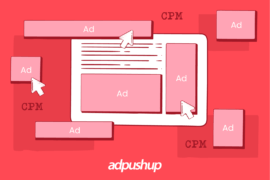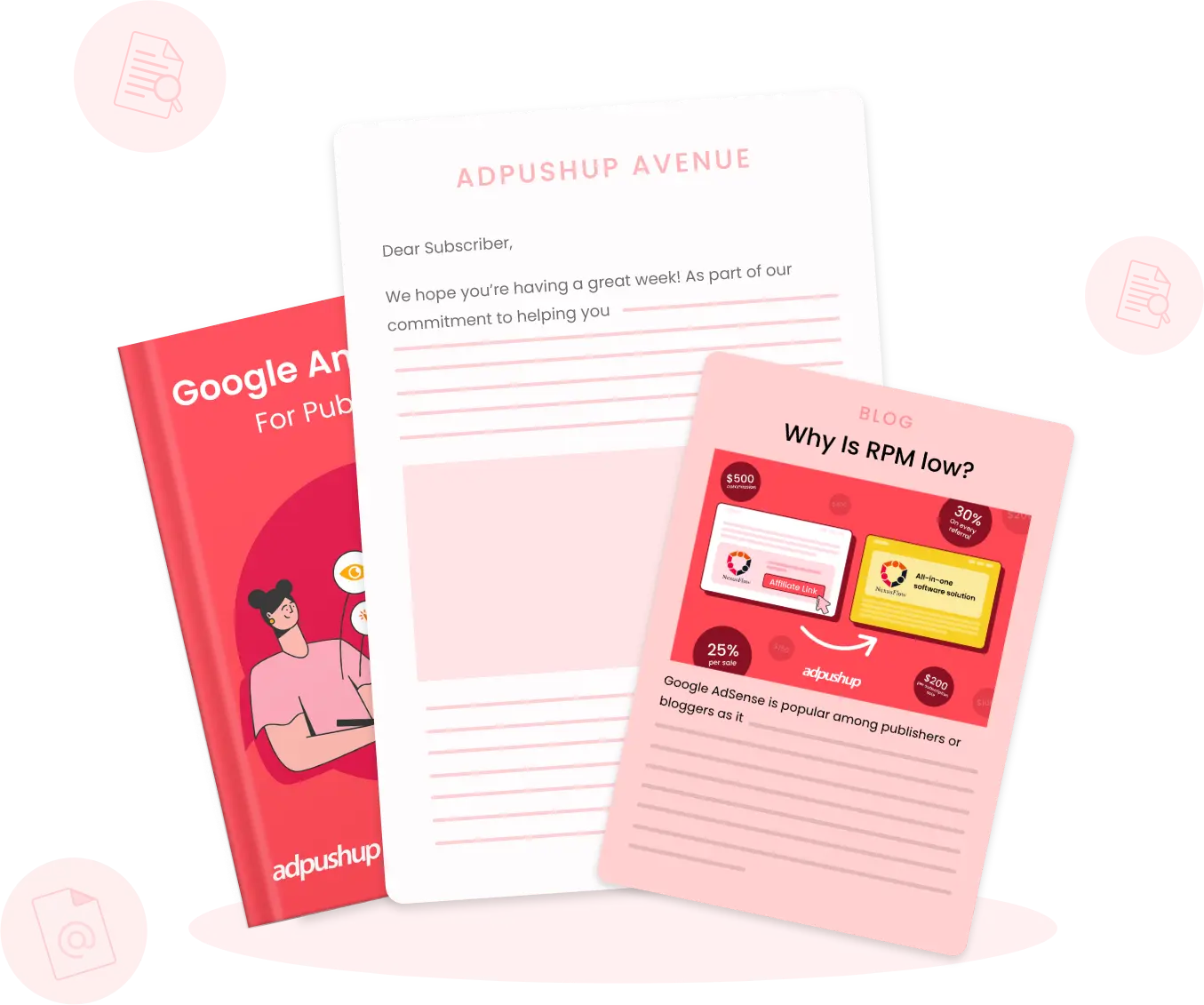Learn how to effectively sell ad space by understanding the minimum requirements, implementing best practices, and leveraging key strategies. Maximize your revenue potential and attract advertisers with valuable insights.
As a publisher, understanding how to effectively sell ad space directly can be a game-changer for your revenue generation and overall success. By bypassing intermediaries and establishing direct partnerships with advertisers, you gain greater control over your advertising strategy and unlock opportunities for higher ad rates.
One notable example that showcases the effectiveness of selling ad space directly is the Interactive Advertising Bureau (IAB), which has successfully implemented this approach, resulting in improved revenue generation and enhanced advertiser relationships.
However, navigating the world of direct ad sales requires a solid grasp of the minimum requirements, best practices, and strategies that can help you thrive in this competitive landscape.
In this comprehensive guide, we will delve into the intricacies of selling ad space directly for publishers, providing you with invaluable insights and actionable tips to maximize your ad revenue potential.
Before we get into how to sell ad space directly, let’s understand what it actually is.
What is Direct Ad Sales?
As the name suggests, direct ad sales is a one-on-one deal between publishers and advertisers, cutting any middleman—ad network, SSP, DSP, or any other ad agency, allowing publishers to sell ad space directly.
During the early days of advertising, direct deals were the only way for publishers to make revenue. However, programmatic opened up the global market for publishers to reach out to. Also, for small publishers, it gets easier with programmatic auctions to make money out of their blooming websites.
But there are reasons direct deals survived the way of programmatic. One reason being, direct deals are more personal than programmatic. Next, direct deals can also be automated (as offered by Google Ad Manager) by reducing human intervention and errors, thanks to technological advancement.
Also Read – What is Programmatic Direct: All You Need to Know
Sell Ad Space Directly: Unlocking the Benefits & Revenue Potential
There are plenty of benefits to selling ad space directly. Here are the key benefits:
Better Ad Revenue
Obviously, revenue has to be the top reason to choose direct selling.
Ad networks/exchanges are essentially middlemen that match advertisers to ad inventory, facilitating its sale and purchase. They take a cut out of the ad spend (from advertisers) as well as revenue (from publishers) for this service.
After The Guardian sued Rubicon Project because of transparency related to problems, most companies started sharing the percentage share they charge from both parties. This share depends from company to company on their policies.
Eliminating these mediator parties should evidently increase ad revenue.
Keep in mind that even the biggest media publishers only reserve only a small section (premium quality) of their inventories for direct sales. This allows them to demand high rates for ad space from advertisers. Make sure you have a well-organized ad stack and identify premium inventory and sell them directly.
Malware-free Ads
Ads filled with spammy redirects only make your site visitors either bounce, block ads, or both—ultimately damaging your rankings as well as revenue. Programmatic is notorious for facilitating them.
Many demand sources (ad networks or exchanges) engage in arbitrage by packaging and reselling inventory multiple times. This leads to a lengthy chain of redirects before your ad server can locate the source of an ad impression and render it on your website. This created multiple openings for bad actors to inject malware into the system, which could then easily end up on your website.
Going direct-to-advertizer significantly reduces this risk and enables you to serve safe ads on your website.
Creative Control
The ability to sell ad space directly gives you the freedom to evaluate campaign creatives beforehand. This lets you check for contextual relevance and ensures that ads don’t negatively impact your site’s experience.
All of this sounds great. But in practice, it takes considerable time and resources. Since there are no networks and exchanges working on matching the audience and automating the process, the creative review task can take up a significant amount of your time.
All of this pays off in the end when you run a successful direct ad campaign, appreciated by your audience with improved engagement with ads.
Also Read – The Four Types of Programmatic Deals (2023 Update)
Key Questions to Ask Before Getting Started to Sell Ad Space
Is your inventory worth direct campaigns?
Let’s start with traffic. How much monthly traffic do you get? Traffic is directly related to impressions. Hence, this is the first thing an advertiser would check before initiating a campaign. If your current monthly traffic is anything more than 50,000, direct ad sales can benefit you. For the rest of the publishers, it is recommended to improve traffic numbers.
Next comes, content. Some niches (like finance and medicine) pay better than others, in the advertising world. Similarly, you need to identify your content and check what the market is paying for the content type. And then go for a direct campaign.
But some publishers deal in multiple content types.
For such publishers, audience segmentation is very important. Basically, identify the audience with common likes and dislikes; show them to advertisers. Not just for direct ad sales, audience segmentation also helps improve revenue coming in via ad network and SSP deals.
Study your visitors and their behavior with Google Analytics, Quantcast, Mixpanel, or similar tools to identify audience segments. Then package and pitch them to advertisers.
Are there active advertisers in your website’s niche?
So you have segmented your audience for xyz niche advertisers. But are those advertisers actively running ads?
If there is nobody looking for this audience, then the idea to sell ad space directly is not the right for you. Hence, it is your job to pitch to the right audience at the right time.
And if you have a niche website that doesn’t have any ‘active’ advertisers, then you should better stick to programmatic deals till direct ad sales opportunities appear.
Do you have dedicated resources to handle sales and ad ops?
This question stops many small publishers from making direct advertising sales.
Direct selling takes time to find advertisers, engage in communication, and sell a campaign. Next, it takes countless hours of effort to execute the said campaign. Clearly, you would need a dedicated resource to handle sales and ad operations in your domain.
If the answer to the above questions is ‘yes’, then let’s discuss how you should proceed with direct selling.
Also Read – Programmatic Deals vs. Direct Deals
Minimum Requirements for Publishers to Sell Ad Space
High-Quality Content
Unless your content is of high quality, you will have a hard time attracting an audience to your website. Low traffic means, a lower number of advertisers will be interested to advertise on your website.
When advertisers seek a website to promote their products or services, they prioritize finding websites with content that is truly unique, possesses a high quality, and remains pertinent to the target audience. Moreover, you should also post content consistently to increase your monthly views.
That said, you should adhere to these essential factors in order to attract advertisers effectively. In fact, according to Semrush, creating more content boost website ranking.

Smooth UI and UX
If the user experience of your website is not up to par, not only ads on your website will look appealing enough, but your content gets ignored too.
A study conducted by Forester reveals that an effective user interface (UI) has the potential to increase a website’s conversion rate by up to 200%, while an improved user experience (UX) design can elevate the conversion rate by an impressive 400%. This is what advertisers out there looking for, a website that holds the power to convert users.
Wondering how to get your website’s UI and UX right? A seamless user experience involves creating an intuitive and enjoyable journey for website visitors, ensuring effortless navigation and engagement.
As a result, advertisers and publishers can enhance the appeal and effectiveness of ad placements, ultimately driving higher conversion rates and ad space sales.
Loyal Audience
Having a loyal audience of readers is a significant advantage that can bring reassurance and opportunities for monetization. Even websites with limited traffic can sell their ad inventory with the support of a loyal user base.
Engagement from readers can be assessed by various indicators such as the frequency of site visits, clicks on links, and content sharing. However, it can sometimes be challenging to determine whether someone engaged due to encountering an advertisement or by genuine interest.
If you have a niche-specific website, advertisers who belong to that niche would be willing to pay more. It’s because they are looking for people who are already interested in what they have to offer.
To gauge the effectiveness of their advertisements, advertisers can analyze metrics such as email clicks, response rates, and the level of engagement in the comment section. These metrics serve as valuable indicators of the worth of your ad inventory to brands seeking to purchase ad space.
Ad Performance Data
Advertisers rely on data to assess the success and impact of their ad campaigns. Providing detailed reports and analytics on ad performance metrics, such as impressions, click-through rates, conversion rates, and viewability, helps advertisers evaluate the effectiveness of their investment. Robust tracking and reporting capabilities can enhance the appeal of your ad inventory to potential advertisers.
How to Start With Direct Ad Selling?
Aside from a payment method to collect your earnings through, you’ll need:
Media Kit
A media kit is a webpage that presents information related to your traffic and audience. Use numbers and percentages to tell the potential reach of your website. Keep your Media Kit publicly accessible, design it to be presentable, and keep it factual.
The more insight you have on your audience, the better your appeal to advertisers. Here an example of The Guardian’s media kit:

You can also check out this media kit by AdSpyGlass which is completely free and allows users to generate a custom media kit for direct traffic selling.
Rate Card
Next, to sell ad space, having a rate card is a must. A rate card can be a document or webpage listing the prices of all placements that you offer.
For advertisers who are considering your inventory, a rate card helps them align their budget with your price expectations. You can add all ad units and placements that you wish to put on for direct selling. This not only tells about your prices but also shows all the ad types your website deals in.
There’s no need for decorative jazz – just make it a clean and straightforward spreadsheet. Use MS Excel or similar applications. Here is an example of TIME’s rate card:

Spec Sheet
A spec sheet is another document that should include technical information and ‘terms and conditions’. You can mention the ad creative (size, type, and format) that you follow. It can also include third-party ad tag acceptability, flash or rich-media requirements, and more.
For inspiration, you can download one of Wall Street Journal’s spec sheets.
How to Find Advertisers to Sell Ad Space
Okay, so good traffic and segmented audiences make your website attractive to advertisers. But how would they find you and you find them?
Here are some tips to help you find relevant advertisers for direct ad sales:
- Outreach and follow-ups:
Start by looking up brands/products/services that appear on your or a competitor’s websites programmatically (via an ad network or exchange). Reach out to the advertiser or agency decision-makers directly to talk about promotion opportunities. Make sure to follow-up.
- Ask you, advertisers, to go direct:
Look for advertisers already bidding on your inventory and would be a good fit for your direct campaign. Once you have a list of advertisers, reach out to them and pitch.
- Media Sales services:
If you don’t have the staff for outreach but have the budget to spare, try out services that help you get leads for direct ad sales like Winmo, MediaRadar, AdMall, etc.
- Direct Campaigns:
Thalamus.co Marketplace, for instance, is a great, well-moderated resource that lists ongoing and new campaigns put out directly by advertisers or agencies. Check it regularly.
What About the Rest of Inventory?
For the rest of your inventory, you have programmatic deals like header bidding, open bidding (exchange bidding), and private marketplaces.
Selling ad space directly is only for high-value and premium parts of your inventory. If you are just starting out, make sure you carefully divide your inventory between direct and programmatic deals. Even the biggest publishers rely on header bidding to get networks/exchanges to fill the rest of their inventories.
Yes, it sounds intriguing to sell ad space directly, but you can still depend on programmatic deals, if direct selling doesn’t work. And with sophisticated audience matching techniques and ad quality measures, programmatic selling can offer similar performance on your ad campaigns.
Frequently Asked Questions on Selling Ad Space
Publishers and advertisers directly negotiate ad sales, eliminating any middlemen, whether it’s an ad network, SSP, DSP, or any other ad agency. In the early days of advertising, publishers could only earn revenue through direct deals.
Direct selling is the sale of products outside of a retail setting, such as at home, online, or at other venues. Middlemen involved in distribution, such as wholesalers and regional distribution centers, are eliminated.
The three types of direct selling are single-level direct, party-plan, and multi-level marketing. Pyramid schemes are different from multi-level marketing and are illegal.

Deepak has a keen eye for detail and a deep understanding of the ad tech landscape. Whether it’s through in-depth articles, thought-provoking insights, or compelling storytelling, he’s dedicated to helping people navigate the complex world of ad tech with the simplicity of his words.







